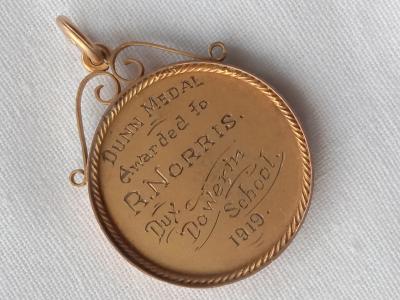Not Forgotten. 7682 Private Alfred Edward AINSWORTH, 51 Battalion, World War 1
Private Alfred Edward Ainsworth was born in Yarrawonga in Victoria, the son of Alfred Edward and
Christina Ainsworth who were living at Cowcowing at the time of his enlistment. Private Ainsworth was
farming before he enlisted in Perth on 4 April 1917 at the age of 33 when he was placed in the 11th
Infantry Battalion, 26th Reinforcements. He embarked at Fremantle on 29 June 1917 on HMAT A30,
Borda and arrived in Plymouth on 25 August 1917.
After initial training Private Ainsworth was admitted
to the Sutton Veny Military Hospital with German measles between 17 and 26 January 1918. On his
recovery he was sent to France, arriving in Havre on 3 March 1918 and taken on strength with the 51st
Battalion on 9 March.
The 51st Battalion was raised in Egypt in the first week of March 1916, as part of
the “doubling” of the AIF. Approximately half of its recruits were Gallipoli veterans from the 11th
Battalion, and the other half were fresh reinforcements from Australia. Reflecting the composition of
the 11th, the 51st was predominantly composed of men from Western Australia. The battalion became
part of the 13th Brigade of the newly-formed 4th Australian Division.
With the collapse of Russia in October 1917, a major German offensive on the Western Front was
expected in early 1918. This occurred in France in late March and the 4th Division moved to defend
positions around Dernancourt on the River Ancre. The 51st Battalion assisted in the repulse of a large
German attack on 5 April, launching a critical counter-attack late in the day. The German threat
remained until late April, and in the early hours of ANZAC Day 1918 the 51st participated in the now
legendary attack to dislodge the enemy from Villers-Bretonneux. As part of the German Spring
Offensive on the Western Front German forces using infantry and tanks captured Villers-Bretonneux
from exhausted British defenders on 24 April 1918. The Australian 13th and 15th Brigades were brought
forward and in a model of a well-planned and coordinated night attack successfully recaptured the
town.
Private Ainsworth was killed in action at Villers-Bretonneux on 24 April 1918. He has no known grave
and is commemorated on the Australian National Memorial to the missing at Villers-Bretonneux. Alfred
Ainsworth was awarded the British War Medal and the Victory Medal.
In April 1919 Private Ainsworth’s father wrote asking about his son’s kitbag and was told that it may
have been deposited with one of the large warehousing firms in London such as Messrs. Thos. Cook &
Son, Cox’s Shipping Agency and told it was customary for those firms to furnish the A.I.F. headquarters
with periodical lists showing the property of members of the A.I.F. held by them and the military
authorities then collected the property of deceased soldiers and items of personal or sentimental value
would be extracted and forwarded to the next of kin.
Details
Details
For some years Diane Hatwell had been intrigued by the names on the Dowerin War Memorial. Some were familiar with the families still in the district but some not so. Diane felt It was important for the community that when we said each ANZAC Day “We will remember them”, we had some idea of who and what we are remembering. She set about, to find out who they were, what they were doing in the Dowerin district, and where and how they died. These pages presented through Collections WA represent the current state of this ongoing research and community response.
Open in Google Maps
Nearest geotagged records:
- Not Forgotten. 1888, Private Charles ALLANSON, 28 Battalion, World War 1 (0km away)
- World War 1, Europe Vaire Wood, BALL, 16 Battalion, 1918 (0.04km away)
- World War 1, Europe Villers Bretonneux, (0.12km away)
- World War 1, Western Australia, 4914 WEEDON, 51 Battalion (0.12km away)
- Not Forgotten, 3270 Private Leslie Harold MEDBURY, 46 Battalion AIF, World War 1 (0.12km away)
- World War 1, Europe, 3822 HILL, 11 Battalion, 1916 (0.12km away)
- Not Forgotten, 7483 Private Arthur James HICKS. 11 Battalion AIF, World War 1 (0.12km away)
- Not Forgotten, 772 Private Robert Clyde SKERRY, 28 Battalion AIF, World War 1 (0.12km away)
- World War 1, Western Australia, 2220 HOWARD, 11 Battalion (0.12km away)
- Not Forgotten,4732 Acting Corporal John Livingstone BENNETT, 11 Battalion AIF, World War 1 (0.12km away)

